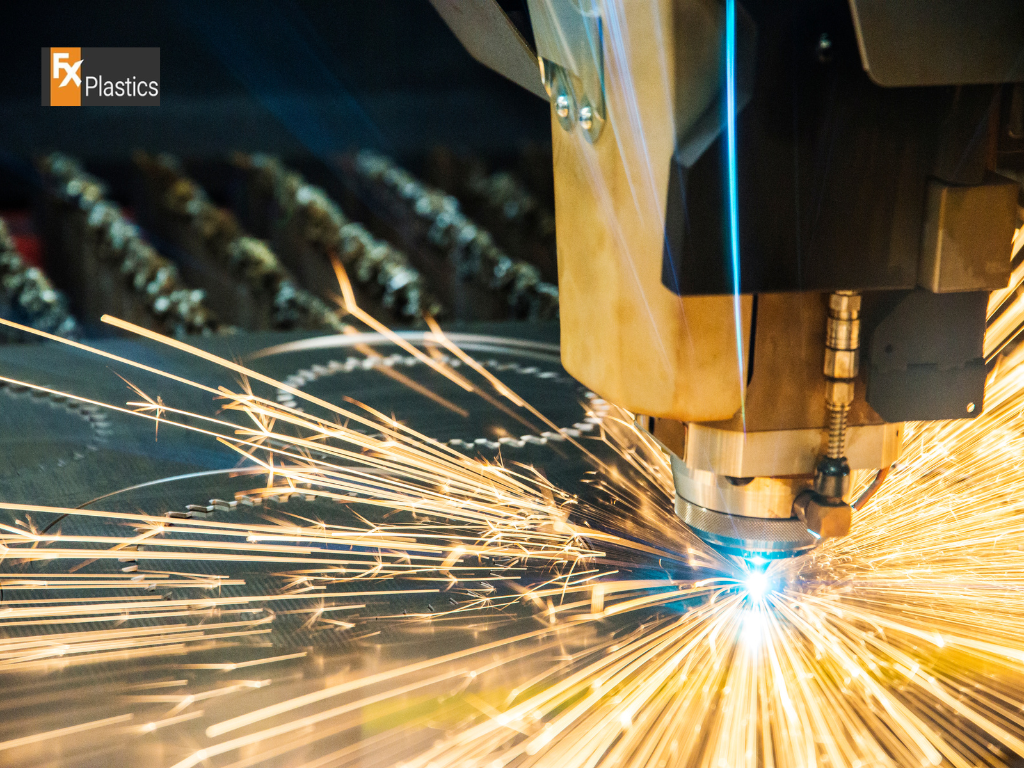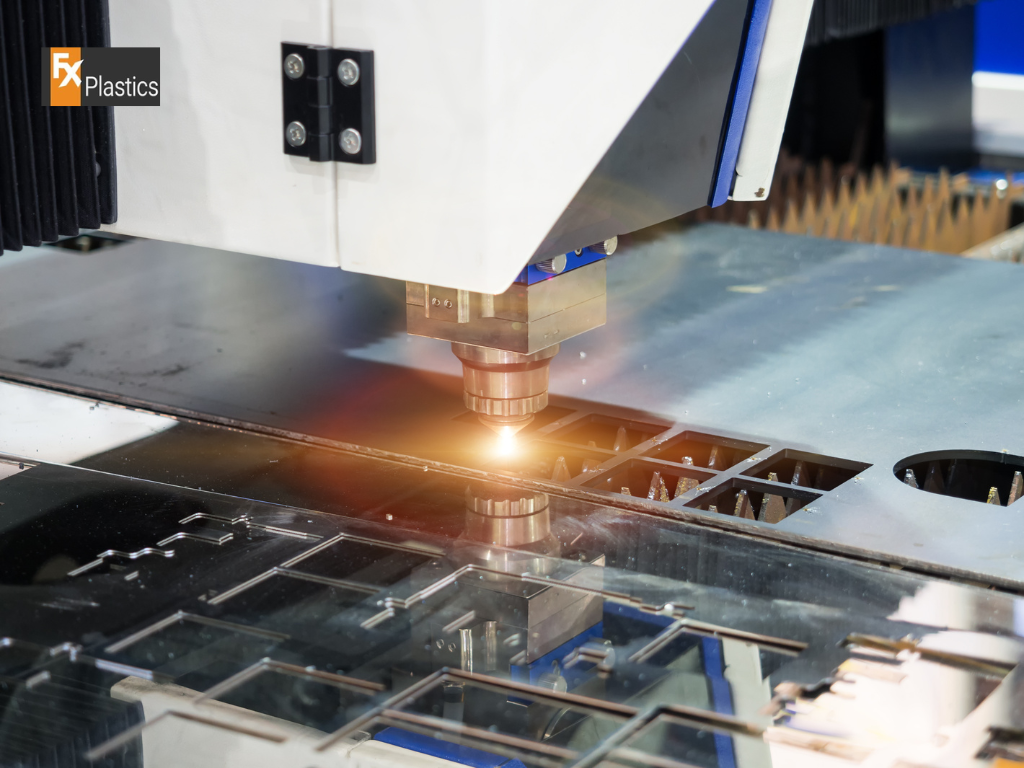CNC (Computer Numerical Control) laser cutting is a technology that utilizes computer-controlled laser beams to precisely cut and engrave materials. This process involves directing a high-powered laser through optics that focus the beam onto a material’s surface, causing it to either melt, burn, vaporize, or be blown away by a jet of gas, leaving a high-quality finish. CNC laser cutting stands out for its precision, allowing for complex shapes and fine details to be cut out of a wide range of materials.
The Role of CNC Laser Cutting in Custom Fabrication
In custom fabrication, CNC laser cutting plays a vital role in creating intricate and precise components that might be difficult or impossible to achieve with traditional manufacturing methods. It allows for high levels of customization without compromising accuracy. This capability is especially valuable in industries where bespoke designs and rapid prototyping are required, such as in automotive, aerospace, and decorative arts. CNC laser cutting provides a versatile and efficient solution for both small-scale custom jobs and large-scale industrial production.
Design Aspects for Custom CNC Laser Cutting

Key Design Considerations Specific to CNC Laser Cutting
Designing for CNC laser cutting requires a thoughtful approach to ensure the final product meets the desired specifications. Key considerations include understanding the limitations and capabilities of the laser cutter, such as the thickness of material it can cut and the precision of the cuts it can make. Designers must also consider factors like kerf (the width of the cut), which can affect how pieces fit together in an assembly. Additionally, minimizing material wastage and optimizing the layout of the design on the material are crucial for efficiency.
The Interplay between Design Software and Laser Cutting Precision
The precision of CNC laser cutting is significantly influenced by the design software used. Vector-based software allows for precise control over the dimensions and layout of the cut, translating complex designs into accurate cutting paths for the laser. The software’s ability to handle fine details and intricate patterns directly impacts the quality and feasibility of the final cut. As such, designers must have a good grasp of the software capabilities and how they align with the laser cutter’s specifications.
Material Selection for Custom Fabrication with CNC Lasers
Overview of Suitable Materials for CNC Laser Cutting
CNC laser cutters can work with a diverse range of materials, each offering different benefits and considerations. Commonly used materials include metals such as steel and aluminum, plastics like acrylic and polycarbonate, wood, and various composites. The choice of material depends on factors such as the desired strength, durability, aesthetics, and cost.
How Material Choice Affects the Outcome in Custom Fabrication
The choice of material has a significant impact on the outcome of a CNC laser cutting project. Different materials respond to laser cutting in various ways; for example, metals require a higher laser power and might produce more heat-affected zones compared to wood or plastic. The material’s thickness, reflectivity, and melting point also influence the quality of the cut and the speed of the process. Choosing the right material is essential for achieving the desired quality, functionality, and appearance in custom fabrication projects.
Custom Fabrication Techniques with CNC Laser Cutting
Techniques and Methods Unique to CNC Laser Cutting in Custom Fabrication
CNC laser cutting offers several unique techniques that elevate the standard of custom fabrication. One such technique is intricate cutting, which allows for the creation of extremely detailed and complex designs that would be challenging to achieve with traditional cutting methods. Layering is another technique where different materials or layers are cut separately and then assembled to create multidimensional structures. Engraving is frequently combined with cutting to add detailed patterns, text, or imagery to the cut pieces. Additionally, CNC laser cutting enables the creation of interlocking designs, ideal for creating 3D structures from flat sheets.
Examples of Custom Fabrication Projects Achievable with CNC Laser Cutting
The versatility of CNC laser cutting makes it suitable for a wide range of custom fabrication projects. Examples include bespoke jewelry pieces featuring intricate designs, architectural models with detailed components, custom signage with complex logos and fonts, and unique furniture designs that incorporate detailed patterns and interlocking parts. In the art world, artists often use CNC laser cutting to produce intricate installations or sculptures.
Integrating CNC Laser Cutting with Other Fabrication Methods
Ways to Combine CNC Laser Cutting with Other Fabrication Techniques
CNC laser cutting can be effectively integrated with other fabrication methods to enhance the capabilities and possibilities of custom projects. For instance, combining laser cutting with bending or welding allows for the creation of complex, three-dimensional structures from flat-cut pieces. Incorporating CNC milling or 3D printing with laser cutting can result in components with a mix of textures and properties, suitable for highly specialized applications.
Benefits of Using a Hybrid Approach in Custom Fabrication
Using a hybrid approach in custom fabrication opens up new avenues for creativity and functionality. It allows for the exploitation of the strengths of each method, such as the precision of laser cutting with the structural strength achieved through welding or milling. This approach can lead to innovations in product design, enabling more complex and varied outputs, and can often result in time and cost savings by using the most efficient technique for each part of a project.
Preparing Files and Prototypes for Custom CNC Laser Cutting
Guidelines for Preparing Design Files for CNC Laser Cutting
Preparing design files for CNC laser cutting requires careful attention to detail. The design should be created in a vector format, using software like Adobe Illustrator or AutoCAD. It’s important to consider the kerf, and adjust the design accordingly to ensure parts fit together as intended. Layers in the design file should be organized and labeled based on the cutting, engraving, or marking actions required. Setting the correct line weights and colors for different cut depths or engraving intensities is also crucial.
The Role of Prototyping in Custom CNC Laser Cutting Projects
Prototyping plays a vital role in custom CNC laser cutting projects. It allows designers and fabricators to test their designs with the actual materials and cutting parameters before moving to full-scale production. Prototyping helps in identifying and rectifying design flaws, material issues, or potential difficulties in the assembly process. It ensures that the final product meets the desired quality and functionality standards, reducing the risk of costly errors or reworks in the later stages of production.
Quality Control and Finishing in CNC Laser Cutting

Ensuring Quality in the CNC Laser Cutting Process
Quality control in CNC laser cutting is crucial to ensure that the final products meet the desired standards. This involves several key steps:
- Pre-Cutting Checks: Before the cutting process begins, it’s essential to inspect the material for defects and ensure that the laser cutter is correctly calibrated.
- In-Process Monitoring: During cutting, parameters such as laser power, cutting speed, and focus must be continuously monitored to maintain consistency and precision.
- Post-Cutting Inspection: After cutting, each piece should be inspected for accuracy and quality. This includes checking dimensions, edge quality, and the overall appearance.
Finishing Techniques for Custom Fabricated Items
The finishing process enhances the appearance and functionality of CNC laser-cut items. Common finishing techniques include:
- Sanding and Polishing: To smooth edges and surfaces, especially in wood and plastic items.
- Painting and Coating: Applying paints, stains, or protective coatings to add color or enhance durability.
- Assembling and Welding: For projects involving multiple components, precise assembly and welding (if needed) are important for structural integrity.
Final Thoughts on CNC Laser Cutting in Custom Fabrication
Looking to the future, CNC laser cutting technology continues to evolve, with advancements in laser power, speed, and efficiency opening up new possibilities. The integration of AI and machine learning for more autonomous operation and enhanced precision is on the horizon. Additionally, the growing trend towards eco-friendly materials and processes is influencing the development of laser cutting, with more emphasis on sustainable practices. As the technology becomes more accessible and versatile, its role in custom fabrication is set to grow, offering even more opportunities for innovation and creativity.

